FW
Vinatex predicts, Việt Nam’s textile and garment industry is likely reach its target of $40 billion in export turnover this year as the industry reported export earnings of $29.3 billion in the first nine months of the year. This was mainly due to the industry's efforts to overcome difficult global economic conditions. Solutions had been implemented synchronously to remove difficulties, especially input prices which had dropped sharply due to the trade war.
Technology is seen as a key factor helping Việt Nam’s textile and garment industry to promote business and expand its markets. Many Vinatex firms had invested in automatic cutting and spreading machines to replace workers, and in 3D design. Meanwhile, yarn and dyeing were also under pressure from the fast development of technology. Businesses have also forged e-commerce deals or invested in their own online sales services to increase domestic market share.
According to the new wool market research report published by the Persistence Market Research (PMR), the global wool market is likely to grow at a CAGR of 3 per cent to reach nearly $ 49 billion by 2029-end.
This growth can be attributed to several factors including the increasing disposable income of consumers across various geographies, which has significantly boosted the spending capacity of consumers on apparels and interior textiles.
A prominent share of the global wool market volume is consumed by the textile producers in China. Favorable conditions, such as economical textile production, the availability of raw material, and significant growth of the manufacturing sector in China, are expected to boost the consumption of wool from textile industries. Thus, East Asia, with a significant contribution from China, is expected to provide attractive opportunities for the growth of the global wool market.
International Apparel and Textile Fair (IATF) is on in the UAE, November 4 to 6, 2019. This is the only fashion B2B trade show in the Middle East that showcases the latest season’s trends and quality products, an opportunity to meet exhibitors from all around the world and connect directly with mills and manufacturers. This is a platform for sourcing apparels, fashion fabrics, prints, machineries, clothing accessories, home textiles, footwear and handbags. The fair has attracted a wide range of textile mills, accessories/trim suppliers, print designers and major footwear manufacturers. Exhibitors are mainly from Turkey, Hong Kong, China, India, Poland, Italy and more. Exhibitors can unite at one platform to showcase their collections to buyers from within the Mena region.
IATF is passionate about staying ahead of market changes in order to offer the best guidance to buyers today and for the long term. Natural fibers and rustic materials are being showcased. The themes are: Wrinkled and Undulating, Natural Imperfections, Space Dye and Neps, Rustic Reimagined and Denim Rediscovered. Attractive, extremely fashionable products made from bio-sourced, recycled and recyclable materials, or with eco-friendly elasticities, notably for stretch knits, denims and suitings are on display. Colors range between confidently expressed naturals and a delicate sensuality.
Blockchain can solve problems in the apparel supply chain. Though consumers are increasingly becoming wary of pay inequality and are forcing brands to be accountable, there are not many effective ways to ensure businesses do not continue exploiting their vulnerable workforce. Blockchain can help solve this predicament, as it can throw fashion supply chains open to all relevant stakeholders within its network, letting them gather information on essential parameters concerning operations, while having a window-seat view to the manufacturing, packing and distribution of products.
Fake goods are a debilitating problem within the fashion industry. With the visibility that blockchain ushers into the landscape, stakeholders can now have more trust in the system and can help reduce excessive red tape at nodal points – leading to significantly improved customer satisfaction.
Waste is another problem. The industry grapples with excessive waste during the manufacturing phase. Brands routinely destroy unsold but completely well-made fashion products by the end of the season. Blockchain can also be extremely effective in solving waste in the fashion industry. With the greater visibility brought about by blockchain, consumers can understand the amount of waste within the fashion industry and can question the conscience of brands. Reducing waste not only makes brands more sustainable, but redirecting unsold items to the secondary market could also help trickle-down fashion to other sections of society.
"Key components play a vital role in every area of yarn production for both new installations and replacement parts and Swiss Textile Machinery members such as Bräcker, Graf, Heberlein, Loepfe and Rotorcraft are all class-leading manufacturers. All well-known names in the industry, these companies have based their success on long- term investment in and the development of sophisticated solutions for their customers worldwide."
 With the power of innovation, Swiss Textile Machinery members drive to succeed in the yarn manufacturing sector. Swiss Textile Machinery members work on the innovative strength and the market focus to drive business success for spinners and synthetic fiber producers worldwide.
With the power of innovation, Swiss Textile Machinery members drive to succeed in the yarn manufacturing sector. Swiss Textile Machinery members work on the innovative strength and the market focus to drive business success for spinners and synthetic fiber producers worldwide.
Spun yarns, man-made and synthetic The world-leading status of Swiss machinery for yarn production today has recently been demonstrated with the huge contracts secured by the Rieter Group at ITMA 2019. Seven new modernization projects are being planned for the Egyptian textile industry worth a total of 180 million Swiss Francs. Swiss Textile Machinery member Maurer is a pioneer in the supply of viscose manufacturing plants and machinery. In synthetic fibers, Swiss Textile Machinery also has a leading player. Retech develops and markets systems for drawing and processing high-performance synthetic fibers and yarns.
Key components play a vital role in every area of yarn production for both new installations and replacement parts and Swiss Textile Machinery members such as Bräcker, Graf, Heberlein, Loepfe and Rotorcraft are all class-leading manufacturers. All well-known names in the industry, these companies have based their success on long- term investment in and the development of sophisticated solutions for their customers worldwide.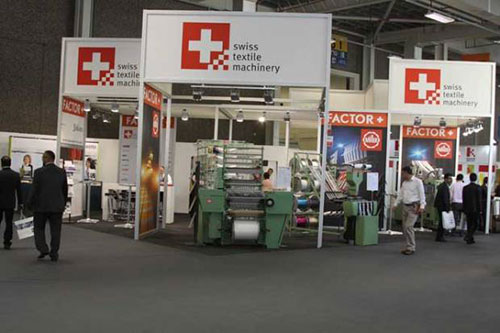
Digital solutions for the knowledge and changing priorities in the digital age create new challenges for textile producers – and new solutions. One such is the worldwide shortage of qualified and knowledgeable personnel, for which Saurer now offers a way of managing an entire production operation with a single intelligent program. ‘Senses’ is the name of its digital mill management system. It can cover machines from third-party manufacturers as well as Saurer brands. Digitalization is essential for profit-oriented quality management in spinning. Ideally data from laboratory testing and in-process quality control should be combined.
Strengthen process automation extends to management for supporting the interconnection of production and quality data. Quality Management Platform integrates information from key production processes. The Central Vacuum System is most suitable for automatic yarn waste disposal from the filter chambers of the end-spin-machinery, as a cost-efficient and more reliable solution than manual methods.
Innovation on every level is powering the future For Swiss Textile Machinery makes modern yarn production and processing, on every level from ingenious manufacturing techniques to essential service solutions.
"Industry, traders and farmers in India have appreciated the government's decision not to join RCEP deal. Union commerce and industry minister Piyush Goyal termed the deal against India's economic interests and national priorities. “We have consistently upholded our demands particularly over-controlling trade deficit, stronger protection against unfair imports and better market opportunities for Indian goods," he said."
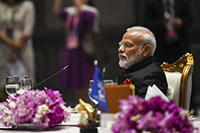 Prime Minister Narendra Modi announced India’s decision not to join the China-backed mega Regional Comprehensive Economic Partnership (RCEP) deal as negotiations between the nations failed to satisfy Indian government’s outstanding issues and concerns. The announcement was made during the Prime Minister’s speech at the RCEP Summit in Bangkok. He said, the present form of the Agreement does not fully reflect the basic spirit and the guiding principles of the RCEP. “India is looking at greater integration through this trade deal and had made efforts in those directions from the very beginning.”
Prime Minister Narendra Modi announced India’s decision not to join the China-backed mega Regional Comprehensive Economic Partnership (RCEP) deal as negotiations between the nations failed to satisfy Indian government’s outstanding issues and concerns. The announcement was made during the Prime Minister’s speech at the RCEP Summit in Bangkok. He said, the present form of the Agreement does not fully reflect the basic spirit and the guiding principles of the RCEP. “India is looking at greater integration through this trade deal and had made efforts in those directions from the very beginning.”
Industry hails decision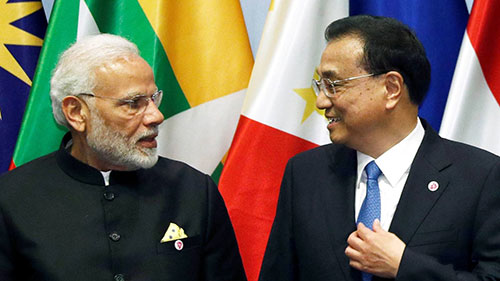
Industry, traders and farmers in India have appreciated the government's decision not to join RCEP deal. Union commerce and industry minister Piyush Goyal termed the deal against India's economic interests and national priorities. “We have consistently upholded our demands particularly over-controlling trade deficit, stronger protection against unfair imports and better market opportunities for Indian goods," he said. On similar lines, Union minister for Textiles and Women & Child Development Smriti Irani also hailed Modi's decision to put "nation first is reflected today in India's stand on RCEP." She said, Indian textile Industry is grateful for his intervention and support.
Relief to manufacturers and traders
The Clothing Manufacturers Association of India (CMAI) also welcomed the decision to not join RCEP. Rahul Mehta, President, CMAI called the RCEP “a double edged sword that would benefit only some Industries while others will suffer due to it.” This step by the Prime Minister will offer relief to thousands of small manufacturers and traders,” he said. However, Mehta advised the industry to stand on its own and face competition. “It is the responsibility of the government, industry associations, and industry itself, to create the right policy framework, the appropriate platform, and the will to evolve to reach that state,” he said.
Texcon-the annual textile conference organised by CII brings together leading players of the Indian textile industry, global buyers, and policymakers to deliberate on key areas of business, including regional as well as global issues concerning the sector. The conference also focused on emerging export opportunities and how Indian industries can leverage these for growth.
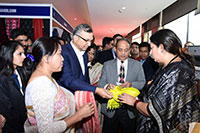 With 15 per cent share in the country’s export earnings and a 5 per cent share in its annual GDP, India’s textile and apparel industry holds a prominent position in the country’s economy. This has been achieved mainly due to easy access to raw materials that the country offers along with a pool of skilled manpower and its lucrative central and state policies. Also, the presence of complete value chain in textile and apparels benefits the sector.
With 15 per cent share in the country’s export earnings and a 5 per cent share in its annual GDP, India’s textile and apparel industry holds a prominent position in the country’s economy. This has been achieved mainly due to easy access to raw materials that the country offers along with a pool of skilled manpower and its lucrative central and state policies. Also, the presence of complete value chain in textile and apparels benefits the sector.
However, despite these inherent advantages, the Indian industry lags behind competing nations such as: Bangladesh, China, Vietnam etc, and as it is yet to realise its full potential as a supplier to the global markets.
Need to focus on exports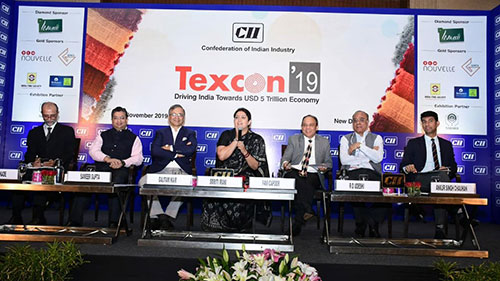
One of the key factors that differentiate India from all these nations is their focus on large, world class manufacturing set-ups across the value chain, crossborder innovations, research and prototype development, and sustainable fashion approach to withstand uncertain consumer demand. “If India aims to grow into a $5 trillion economy, it needs to rebrand itself as an export-driven economy,” said Ravi Kapoor, Textile Secretary at Texcon 2019 being held from November 4-5, 2019 in New Delhi. “However, it is not essential that a country makes everything under the sun. It needs to concentrate on four core areas: petroleum, gems and jewellery, engineering and textiles. These four constitute the chunk of India’s exports.”
Of these, India buys petroleum from outside, does a 6 to 7 per cent valuation on it and exports it to other countries. We also buy gems, stones and diamonds from outside, cut and polish them then add 5 to 7 per cent and valuation and export them. “It is only in the textile industry that we do the entire processing from fiber. This is the only sector that offers us maximum potential to explore. If we have to grow our textiles, we should concentrate on manmade fibers besides neutralising inverted duty structures,” Kapoor explained.
Texcon-the annual textile conference organised by CII brings together leading players of the Indian textile industry, global buyers, and policymakers to deliberate on key areas of business, including regional as well as global issues concerning the sector. The conference also focused on emerging export opportunities and how Indian industries can leverage these for growth.
Held on November 4 to 5, 2019 at the Lalit Hotel, New Delhi, Texcon 2019 conveys the importance of integrating, thinking and acting big in order to achieve global eminence. The theme of the conference this year is: ‘Rise of Indian Textile & Apparel Industry: What is the Need of the Hour’.
Japanese Premium stretch fiber Roica by Asahi Kasei and leading Italian company Sitip congratulate SCOTT Racing Team on this year's impressive achievements which include the victory at the Roc Laissagais, France, Uci Marathon series, and the Third prize at the Italian XCM 2019. The companies teamed together to create high performing and customized outfits for the athletes.
Rosti has exceptionally designed and produced this fully customized cycling suit, both graphically and technically. Everything has been entirely worked and finished by hand.
The exceptional talent of the athletes, Juri Ragnoli, Mattia Longa, Nicoletta Bresciani, Pietro Sarai, also enhanced by the technically advanced customized outfits, brought amazing results for the Season 2019.
The technical Thunderbike Power fabric by Sitip was selected for the shorts. Produced with the special ROICA Resistance, mixed with polyamide, the fabric is able to guarantee excellent bi-elasticity and an excellent elastic modulus over time as well as low deformability.
The high density of the threads enhances making it very compact and ensuring excellent fitting, high resistance to pilling, abrasion and maximum comfort. For the totally transfer printed T-shirts Sitip's Bicimania suggested this high breathable and quick-drying, ideal for the summer season, and extremely comfortable thanks to the ROICA premium stretch fiber.
"Founded by Dean Wegner, Founder and CEO, Authentically American gets its apparels manufactured by a whole list of US contract manufacturers. The company’s T-shirts are manufactured in Texas, while its hats are made in New Jersey, socks in North Carolina, and athletic jerseys in Georgia. Overall, the company has facilities in 12 states across the country."
 Authentically American-a Nashville-based apparel-making startup aims to revive the ‘Made in America’ label by reshoring a bulk of the production of custom branded garments. Currently, the company provides US-made custom branded apparels and merchandise to only corporate, educational, and nonprofit clients around the country. A $8 billion per year business, the company has posted growth rates of over 300 per cent each of the past couple years.
Authentically American-a Nashville-based apparel-making startup aims to revive the ‘Made in America’ label by reshoring a bulk of the production of custom branded garments. Currently, the company provides US-made custom branded apparels and merchandise to only corporate, educational, and nonprofit clients around the country. A $8 billion per year business, the company has posted growth rates of over 300 per cent each of the past couple years.
Founded by Dean Wegner, Founder and CEO, Authentically American gets its apparels manufactured by a whole list of US contract manufacturers. The company’s T-shirts are manufactured in Texas, while its hats are made in New Jersey, socks in North Carolina, and athletic jerseys in Georgia. Overall, the company has facilities in 12 states across the country.
The origin 
Authentically American was born out of Wegner’s curiosity over Procter & Gamble’s acquisitions of apparel brands across the country. His further digging into the issue led him to discover the huge potential that corporate and organisation-branded apparel business had in the US. He then decided to quit his sales job at P&G and move on to Mars Inc.
Another factor that drove him towards this business was his military career. In 2012 along with a partner he purchased an 18-year-old company called Omega Apparel. The company made uniforms including trousers, skirts, and slacks for the Army, Navy, Air Force, Marines, and Coast Guard. However, it didn’t satisfy his ultimate desire to launch an iconic brand and create jobs. Wegner sold his share of the company to his partner and launched Authentically American in July 2017.
Altruistic initiatives
The company progressed well in a short period. Besides its regular customers, the company also supplies apparels to universities like Belmont, Vanderbilt and Lipscomb, and a number of charities. They believe in giving back to the society whatever it receives from it.
In addition, Wegner is also committed to continuing to serve his brothers and sisters in arms. His company donates 10 per cent of proceeds to charities supporting U.S. military veterans, first responders, and their families. That combination garnered them some healthy publicity, including an appearance on Fox & Friends. While the company’s original business plan was to stick to the B2B side of things for a number of years, that publicity has prompted them to recently launch a consumer brand as well. According to Wegner, this will help the company accelerate its future growth.
Knitwear lifestyle brand, 22 Factor has launched a new 3D knitting service which allows designers to create their own garments. The Li & Fung-linked technology is described as a waste-minimising whole-garment production technology, as it allows designers to produce small volumes of stock in a short period of time.
The 3D knitting technology features an HD virtual sampling which allow designers to customise and visualise their designs without creating a physical sample in the traditional manual way. Using Shima Seiki’s wholegarment technology, the manufacturing process is shortened by 92 per cent while the quality of the garment remains.












